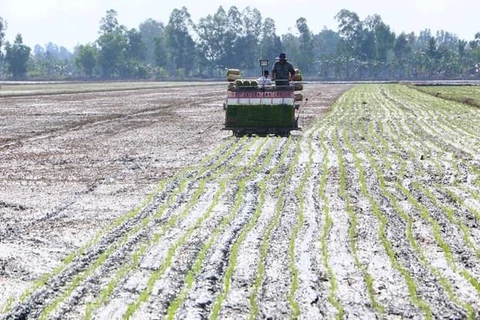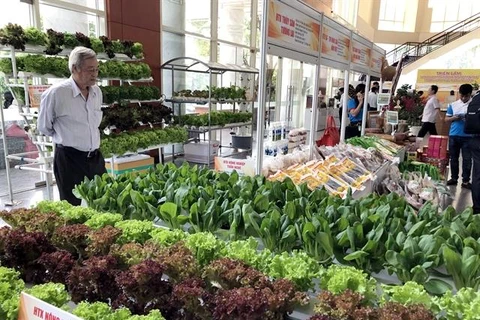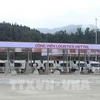Hanoi (VNA) – Deputy Prime Minister Vuong Dinh Hue has applauded contributions of the collective economy in the non-agricultural sector to new-style rural area building and poverty reduction over the past 15 years.
Hue made the comment at a national conference in Hanoi on September 30 to review the 15-year implementation of Resolution No. 13-NQ/TW on continuing to renew, develop and improve the efficiency of the collective economy in the non-agricultural sector.
The Deputy PM, however, pointed out that the collective economy, cooperatives in general and non-agricultural cooperatives in particular have yet to develop on par with potential, and they need long-term solutions to overcome the existing limitations.
He stressed the need to improve the awareness of the public and the entire political system about the collective economy, and organise annual meetings between authorities and non-agricultural cooperatives.
Apart from revamping the State management apparatus over the collective economy and cooperatives, it is necessary to issue typical mechanisms and policies to promote the development of non-agricultural cooperatives, Hue added.
According to Nguyen Van Thinh, Vice President of the Vietnam Cooperative Alliance (VCA), as of late 2018, Vietnam had 64,081 cooperative groups, 8,744 cooperatives and 21 cooperative unions in the non-agricultural sector, doubling the figures in 2003 and making up 39 percent of the total number of cooperatives in the national economy.
In 2018, revenue of each non-agricultural cooperative stood at 8.5 billion VND (366,000 USD), and its profit was 0.48 billion VND (20,640 USD), 2-5 times higher than the figures in 2003.
Nguyen Ngoc Bao, VCA President and deputy head of the Steering Committee for Innovation and Collective Economic Development, said the collective economy in the non-agricultural sector is expected to grow from 8-15 percent annually by 2030.
Vietnam expects to have 130,000 cooperative groups and 15,000 cooperatives and cooperative unions by 2025, attracting 5 million members and generating permanent jobs for 3 million labourers.
The figures are projected to increase to 260,000 cooperatives, 25,000 cooperative unions, 8 million members and 4.5 million labourers by 2030, he said./
VNA























